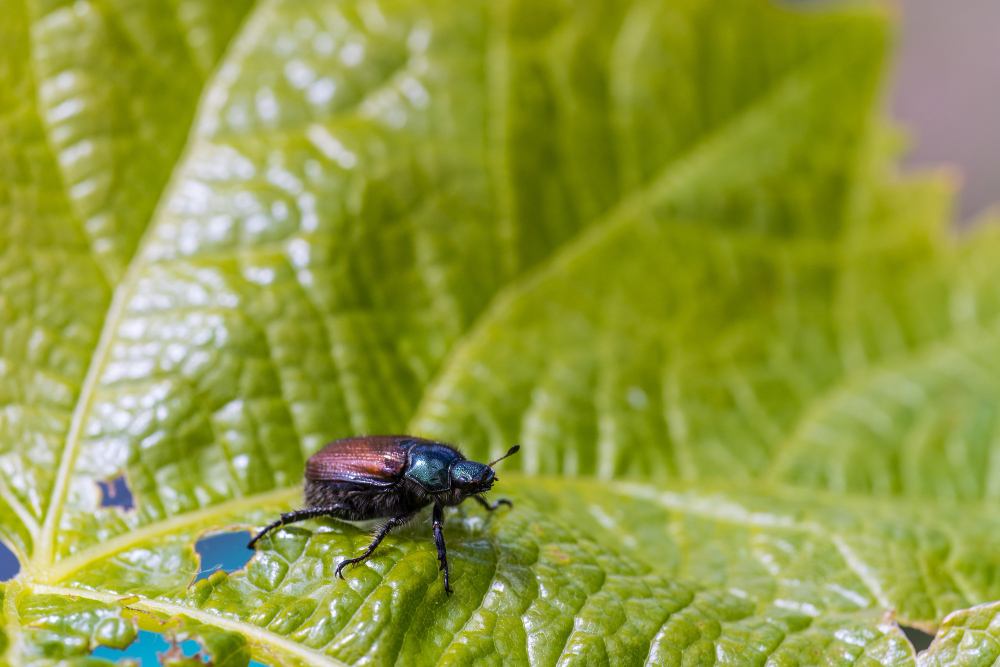
Winter may seem like a time when nature takes a break. Most trees go into dormancy, and their bare branches appear to be in a state of rest. However, beneath the surface, a hidden battle rages. Trees are vulnerable to various pests and insects, especially in regions with mild winters. These tiny invaders seek refuge within tree bark’s protective cracks and crevices, putting your beloved trees at risk. As a trusted tree care company, the Southern Star Tree can help you maintain healthy trees by addressing signs of infestation before things get out of hand. These notorious winter pests can wreak havoc on your trees during the colder months, causing severe damage and premature tree removal.
Spider mites are usually barely visible to the naked eye but can significantly threaten your trees in winter. These insects are masters of disguise and often go undetected until the damage is done. Spider mites feed by piercing the tree’s cells and sucking out the sap, leading to yellowing leaves, stippling, and a generally unhealthy appearance. In mild winter climates, where other pests may not be as active, spider mites thrive. They hunker down in the cozy hideaways provided by tree bark and come out to feed when temperatures rise slightly. To protect your trees, schedule regular inspections with a dependable tree care company during winter to mitigate further damage. In addition, you can employ various organic or chemical control methods to prevent an infestation on your premises.
Scales are another group of sneaky insects that can damage your trees during winter. These tiny, armor-like pests attach themselves to the bark, resembling small, immobile bumps or warts. While they may seem harmless, scales feed on tree sap, causing a decline in health and, ultimately, tree removal emergencies in severe infestations. Their presence often goes unnoticed until you observe the characteristic honeydew residue they excrete, attracting other pests like ants and sooty mold. Our arborists recommend pruning infested branches and applying horticultural oils or insecticidal soaps to manage scale infestations during winter. This goes a long way in ensuring your trees stay healthy and vigorous.
Aphids are notorious for their ability to reproduce rapidly, even during the winter. These tiny insects, often green or brown, gather on the undersides of leaves and branches, piercing plant tissues to suck sap. Their feeding can lead to curling leaves, stunted growth, and the transmission of plant diseases. Aphids can continue their destructive activities without interruption in areas with mild winters. The presence of ants crawling on trees during winter can be a telltale sign of aphid infestations b of the honeydew excretions. To combat aphids in winter, consult a tree service for professional help. We can help you introduce natural predators like ladybugs or use insecticidal soap sprays to deter these persistent pests.
Codling moth grubs are known for infesting fruit trees and damaging the bark and wood of various tree species during winter. These larvae tunnel into tree bark, creating entry points for diseases and weakening the tree’s structure. As winter progresses, the tunnels widen, leaving the tree susceptible to further damage. Consider applying a dormant oil spray in late winter or early spring before bud break to protect your trees from codling moth grubs. If you prefer a hands-off approach, hire a tree service for proven preventative measures to smother the overwintering larvae and minimize their effects.
While trees are dormant during winter, they face various threats from opportunistic pests. Vigilance and timely intervention are essential to protect your trees from these hidden invaders. Contact the Southern Star Tree and schedule regular inspections with our arborists. We leverage extensive expertise and proper control measures, ensuring your trees emerge from winter unscathed and ready to thrive in the warmer months.